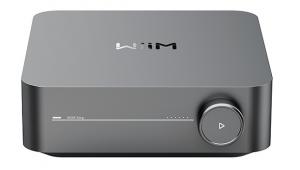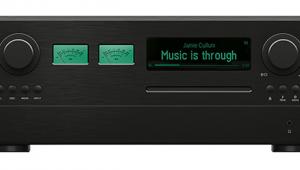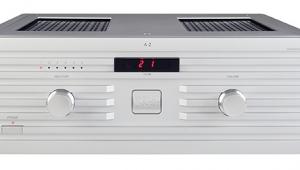Arcam SA30 Network Attached Amp

 Arcam's flagship integrated amplifier combines Class G amplification with features including network streaming, AirPlay 2 and offboard Dirac Live room correction EQ
Arcam's flagship integrated amplifier combines Class G amplification with features including network streaming, AirPlay 2 and offboard Dirac Live room correction EQ
Arcam is still headquartered in Cambridge, from where it took its original name, but the audiophile marque is now part of Samsung's global consumer electronics empire, through the latter's acquisition of Harman International, which had added Arcam to its portfolio in 2016. And amid these management-level changes, Arcam's product line has also undergone a refresh. The brand has withdrawn, for the time being, from the peripherals market, jettisoning its R series of docks and DACs.
Its current commitment is to traditional hi-fi, with a new 'HDA' series of disc players, power and integrated amps. First to launch was the affordable Class AB SA10 (£700), followed more recently by the Class G SA20 (£1000) and, on test here, the range-topping SA30. At £1995, it represents a considerable price hike over the SA20. But it's also considerably more advanced…
Digital Diva
From the outside at least, this full-width stereo integrated looks conventional. Available only in a matt grey finish, it's styled to be an aesthetic match for Arcam's other HDA components, all of which freshen up the designs of the outgoing FMJ range, adding features such as a chrome trim ring around the LCD display, and a flush-fit oversized power button.

Owners of the 2015-era FMJ A39 will still find it visually familiar however, and on the surface it appears little different than the SA20, only a touch larger. Yet Arcam has endowed the SA30 with new technologies that place it firmly in the streaming amplifier category. And the implementation of the Dirac Live room optimisation system, keeps it toe-to-toe with more overtly styled streamers like NAD's Dirac-equipped Masters Series M10 [HFN Jun '19].
The SA30's back panel shows Arcam has been busy since releasing the A39. Not only does this amp add S/PDIF digital inputs (two optical, two coaxial) for the first time – labelled AV, BD, Game and Sat, hinting at the product's potential use as a multimedia system hub – it also carries an HDMI eARC connection for use with a flatscreen TV. It also packs a USB Type-A input for file playback from flash storage.
Additionally, there's a five-strong bank of stereo RCA inputs, with options for both MM and MC phono, plus a stereo pre-out to use the SA30 with alternate amplification. A 3.5mm aux input and same-sized headphone socket are located on the front panel. On the wireless side, the spec sheet includes Chromecast Audio integration and Apple AirPlay 2, but not Bluetooth. Wi-Fi enables hi-res streaming from networked storage (as does the wired Ethernet, along with system control) through Arcam's somewhat barebones MusicLife app [HFN Jun '20], or a third-party UPnP app.
This expanded feature set naturally makes the SA30 more complicated to operate, but Arcam has decided against adopting a touchscreen control, or full-colour display to present album artwork. Navigation around its menus is via the bundled IR remote, with a simplistic tiered hierarchy allowing access to network settings, digital filter selection (Apodising is the default), input management, and so on. Thankfully the largescale nature of the display makes this text-heavy UI easy to read, while the remote has a touch-sensitive backlight that's useful if you like to listen with the lights low.

Gee Whizz
The SA30's Class G amplification is conservatively rated at 2x120W/8ohm. Class G technology, first used by the company in its AVR600 home cinema receiver [HFN Jul '09], aims to improve power efficiency over Class AB designs, aping the low consumption of Class D without introducing the latter's 'engineering foibles'. Whereas the output transistors of Class D technologies are fully on or off, Class G employs a conventional output stage fed from two (or more) power supplies, the secondary ones held in reserve according to signal demand, switching in once the audio output rises above a certain level. At low levels it operates in an enriched Class AB mode.
To enable Dirac Live's digital correction across the SA30's digital and analogue inputs, the amp uses an ADC for the latter, in advance of the DSP engine and ESS Sabre ESS9038 32-bit DAC. Selecting the amp's Direct mode bypasses the ADC, and the user menu allows for inputs to be assigned accordingly.
![]() Body And Soul
Body And Soul
Arcam's Class G implementation underwrites the SA30's performance. This is an amplifier that combines power when needed with a pleasing delicacy and precision. It demonstrates control of the rhythmic parts of a track, revelling in complex percussions and basslines, while at the same time giving impressive body and clarity to vocals and midrange details.

















































